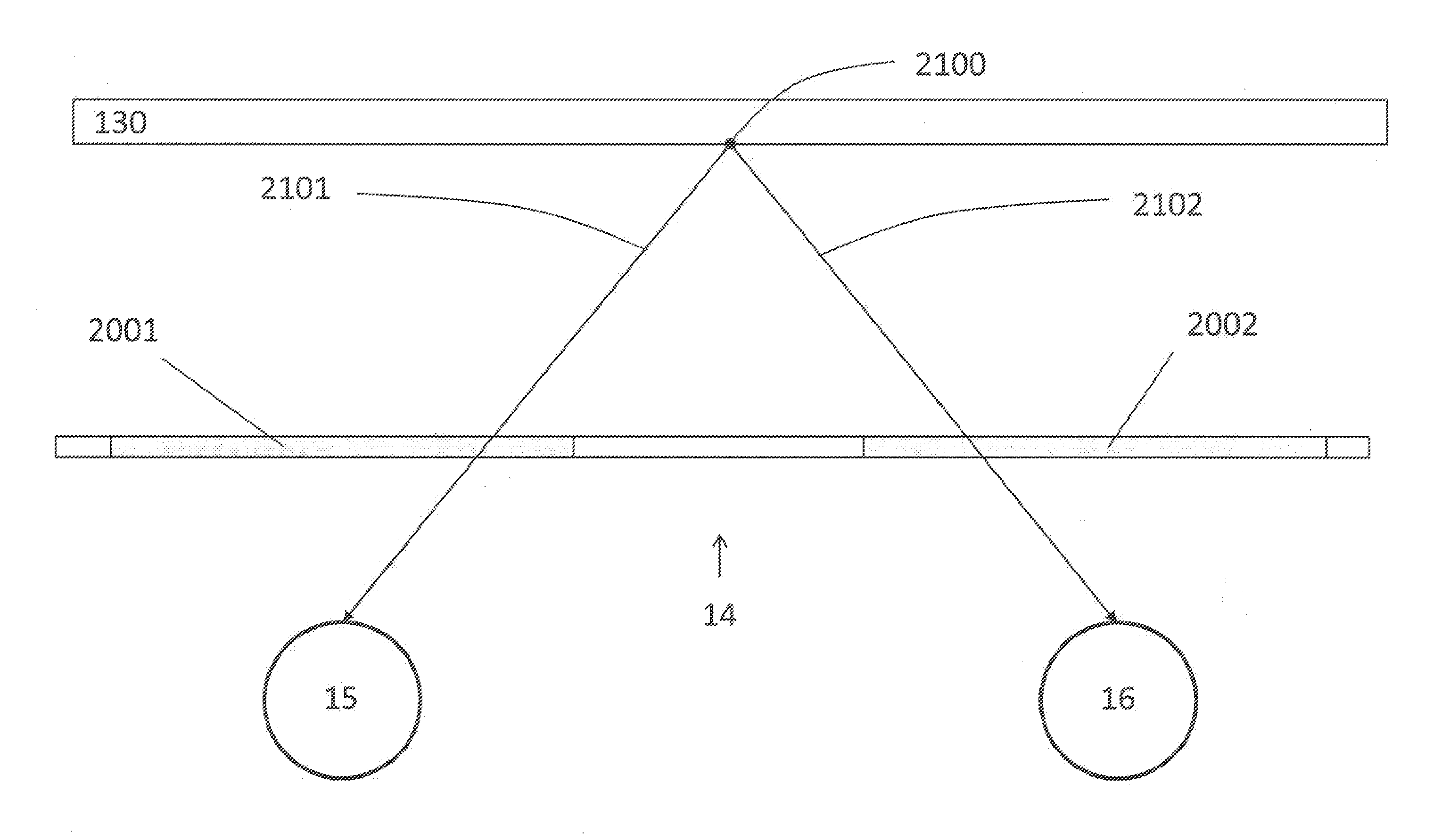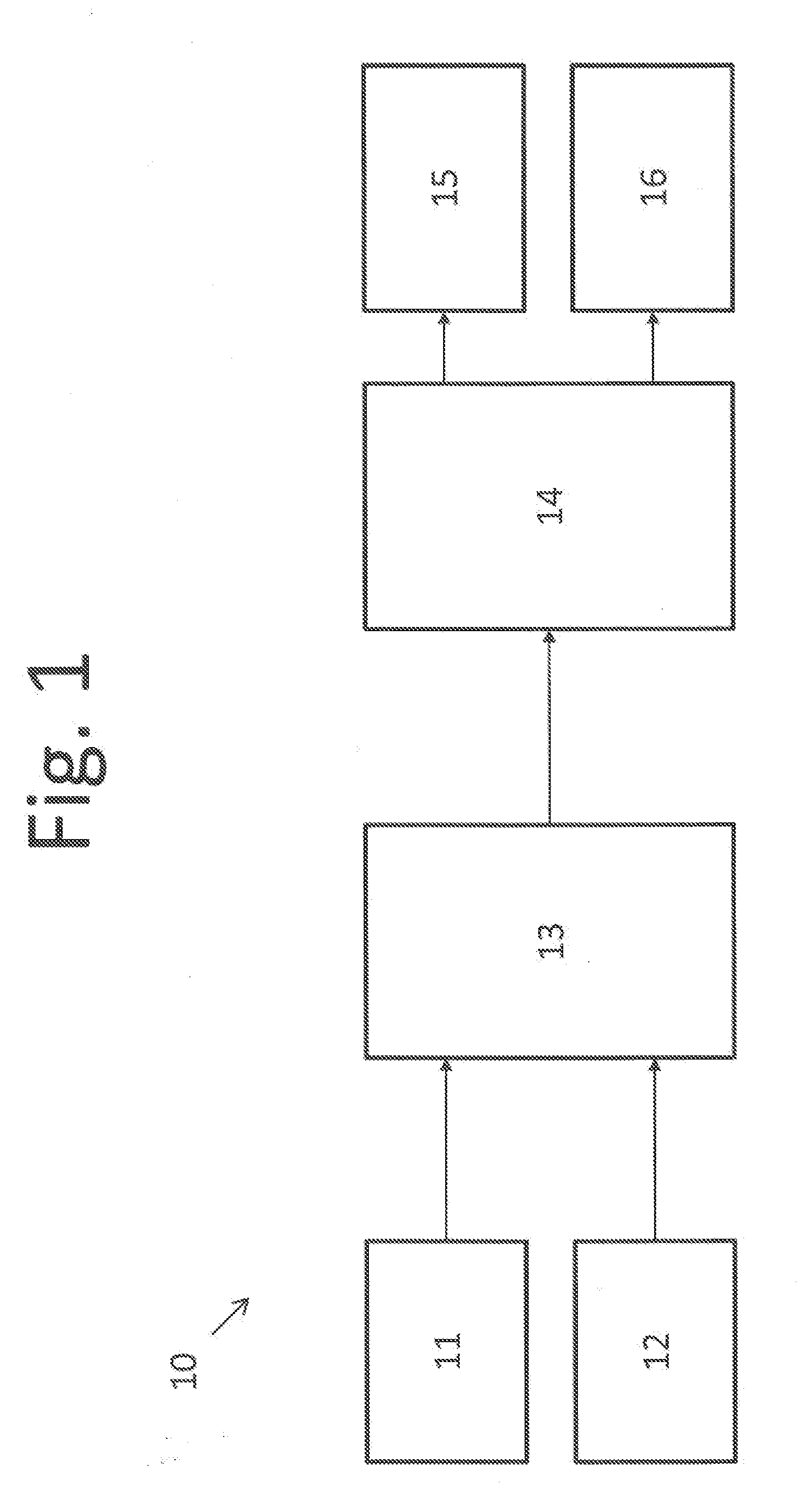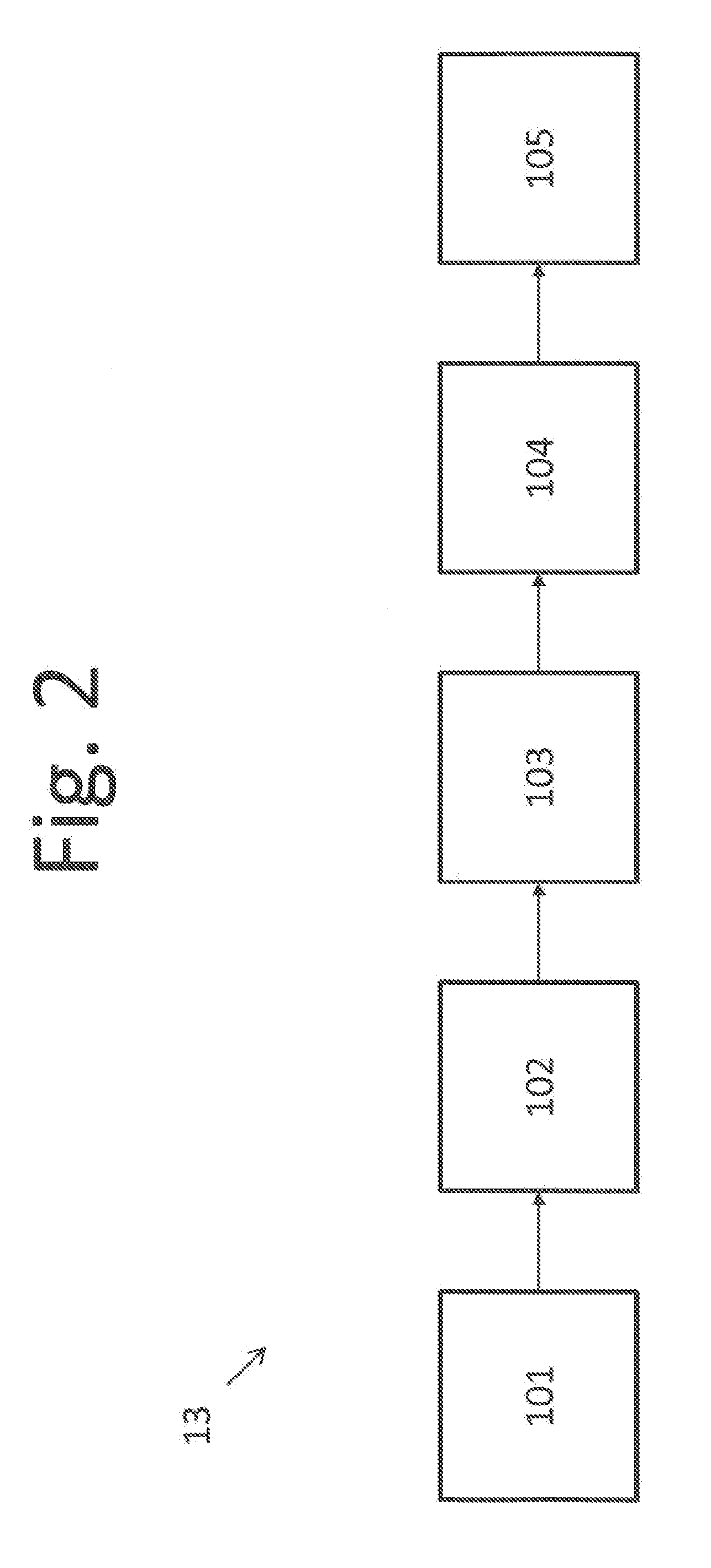Viewing aid for stereoscopic 3D display
a 3d display and viewing aid technology, applied in the field of eyewear, can solve the problems of high stereo extinction ratio of eyewear filter, severe constraints on eyewear design and location, and need for a large number of dielectric layers, so as to reduce the angle-dependent transmission spectra, increase brightness, and design freedom
- Summary
- Abstract
- Description
- Claims
- Application Information
AI Technical Summary
Benefits of technology
Problems solved by technology
Method used
Image
Examples
example filter
and Diffractive Lens Set—FIGS. 21-25
[0081]This example filter set is intended for use with narrow-band RGB LEDs, and is optimized to provide a high visible light transmission in color-neutral glasses while still having a large stereo color gamut. This filter set has three pass bands in the left-eye display filter, three pass bands in the right-eye display filter, four pass bands in the left-eye eyewear filter and four pass bands in the right-eye eyewear filter. This filter set is illustrated by actual interference filter designs.
[0082]The transmission spectra of the left-eye display filter 1501 and right-eye display filter 1502 are shown in FIG. 21, together with the emission spectra of red, green and blue PT-120 LEDs (Luminus Devices Inc., MA, USA). Filters 1501 and 1502 both have three pass bands.
[0083]The transmission spectra of the left-eye display filter 1501 and right-eye eyewear filter 2402 are illustrated in FIG. 24. Eyewear filter 2402 is a triple-notch filter with four pas...
PUM
 Login to View More
Login to View More Abstract
Description
Claims
Application Information
 Login to View More
Login to View More - R&D
- Intellectual Property
- Life Sciences
- Materials
- Tech Scout
- Unparalleled Data Quality
- Higher Quality Content
- 60% Fewer Hallucinations
Browse by: Latest US Patents, China's latest patents, Technical Efficacy Thesaurus, Application Domain, Technology Topic, Popular Technical Reports.
© 2025 PatSnap. All rights reserved.Legal|Privacy policy|Modern Slavery Act Transparency Statement|Sitemap|About US| Contact US: help@patsnap.com



